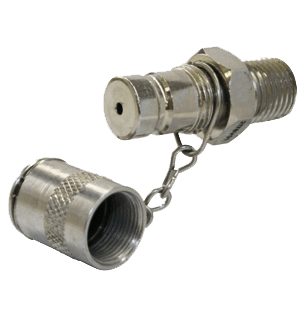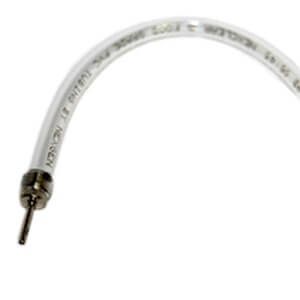-
myLab
-
Services
-
- Acid Number
- Analytical Ferrography
- Base Number: ASTM D2896 vs. D4739
- Crackle Test: Monitoring Water in Used Oil
- Demulsibility
- FTIR Direct Trend Methodology
- Fuel Distillation (ASTM D86)
- ISO Particle Count
- Karl Fischer Water Titration
- Optical Particle Classification (OPC)
- Remaining Useful Life Evaluation Routine (RULER)
- SEM-EDS Wear Debris Analysis
- Total Magnetic Iron (TMI)
- Varnish Potential
-
-
Sampling
-
- Coolant Sampling Procedures
- Grease Sampling Procedures
- Oil Sampling Basics (Short Course)
- Oil Sampling Procedures (Video)
- Oil Sampling Procedures: Good-Better-Best (PDF)
- Sample Collection Basics
- Sampling Oil Using a Drain Plug
- Sampling Oil Using a Pushbutton or KST-Series Valve
- Sampling Oil Using a Sample Pump
- Sampling Oil Using Thread-On Probe Style Valves
- Used Oil Filter Sampling
- Sampling from Filter Carts
-
-
Data Interpretation
-
- Analytical Ferrography Reporting
- Basic Testing Interpretation (PDF)
- Common Wear Mechanisms (PDF)
- Comparison: Wear Debris Analysis Technologies
- DEF Specifications: ISO 22241
- DEF Testing: Data interpretation
- Oil Cleanliness: ISO vs. NAS
- Potential Source of Spectrometry Metals (PDF)
- Reading the OA Report (PDF)
- Understanding ISO Particle Counts (PDF)
- Wear Metal Origins (PDF)
- Why Diesel Fuel Dilution is Bad for Your Engine
-
- Data Interpretation Process (Video)
- Data Interpretation: Compressors (Video)
- Data Interpretation: Diesel Engines (Video)
- Data Interpretation: Grease Analysis for Wind Turbines (VIDEO)
- Data Interpretation: Hydraulics (Video)
- Data Interpretation: Natural Gas Engines (Video)
- Data Interpretation: Oil Analysis for Wind Turbines (Video)
- Data Interpretation: Reducers (Video)
- Data Interpretation: Turbines (Video)
-
-
Whitepapers
-
Success Stories
- Unlocking Millions in Maintenance Cost Savings
- Strategic Optimization of Oil Drain Intervals
- The Case for Building Strong Partnerships
- Case Study: Extended Drain Interval
- CARE & Oil Analysis for Early Detection of Issues
- Fuel Dilution of Engine Oil in Mining Dozer
- Early Detection of Wear Metals in Gearbox
- Coolant Contamination in Dozer Engine Oil
-
FAQ
-
Release Notes
< All Topics
Print
KST-Series Sample Valve
PostedJanuary 10, 2022
UpdatedJuly 22, 2025
ByFluid Life
For Pressurized Systems
The KST style sample valve, popular with Mobile Equipment OEM’s, uses a 2mm probe that is compatible with SOS,
Probalizer, and Quick Draw valves. Sample valves reduce the time needed to extract a fluid sample and help to avoid external contamination while gaining a more representative sample for more accurate oil analysis trending.
Applications
Features
- Reliable dual sealed design tested at 7800 psi for one million cycles
- Patented elastomeric vacuum tight valve seals
- A variety of disposable and reusable probes are available
- Very low purge volume
- Higher flow for low pressure applications
- Carbon steel with corrosion resistant zinc nickel plating
Specifications
- Sampling Range: 5-4000 psi (0.03 – 27.6 MPa)*
- Working Pressure: 6000 psi (41.4 MPa)
- Seal Material Temperature Range:
- Nitrile: -40C – 115C (-40F – 239F)
- Viton: -26C – 204C (-15F – 400F)
- Valve Material: Carbon steel with corrosion resistant zinc-nickel plating
- Valve Overall Size (L x W): 1.5” x 0.78” (approx.)
*Sampling pressures greater than 750 psi (5.17 MPa) is probe dependent.
Standard Sample Probes
Download PDF
Buy Online
Related Articles
Sampling Procedures: KST-Series Valve
Oil Sampling Procedures (PDF)
Webinar: Oil Sampling Procedures
Short Course: Oil Sampling Basics
Table of Contents



